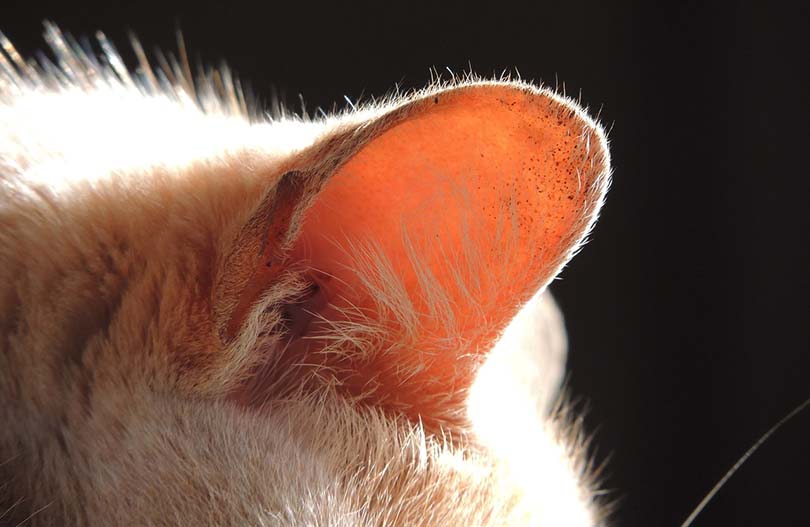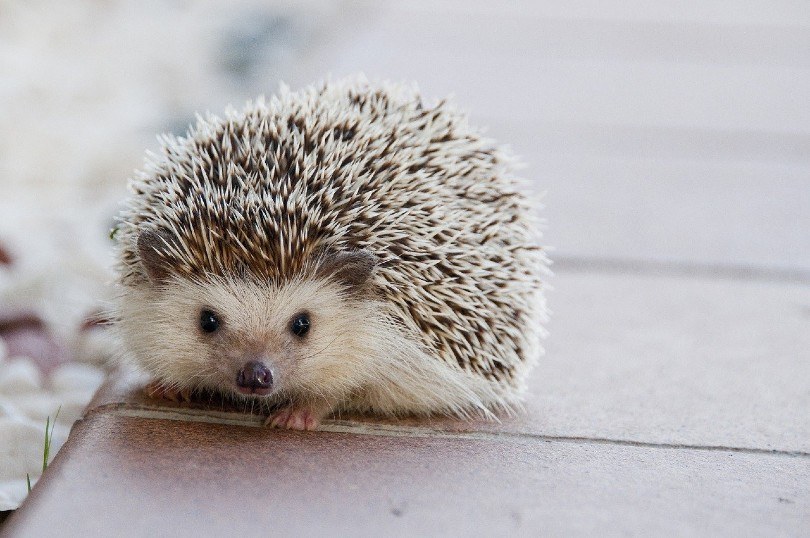VET APPROVED

The information is current and up-to-date in accordance with the latest veterinarian research.
Learn more »Click to Skip Ahead
When it is time to clean the gunk out of your kitty’s ears, it is pretty vital to know what you’re doing. After all, if you are unfamiliar with the process, you could seriously damage the inside of their ears. Lucky for you, this is a pretty straightforward task once you get the hang of it, but only perform it if recommended by your vet.
If you still feel uncomfortable after viewing the tutorial and reading through the steps, you can always take them to your veterinarian or grooming professionals to get proper assistance.

When to Clean Cats’ Ears
Healthy cats rarely need their ears cleaned. Needing to clean a cat’s ears usually means they may be developing an ear infection, they are suffering from frequent skin and ear issues or ear mites, or they are recovering from a recent ear problem.
Before cleaning your cat’s ears, it’s important to first consult with your vet. It’s possible that your cat is suffering from an ear infection and their ear canals may be painful, making cleaning uncomfortable and difficult. Head shaking and scratching, sometimes with a head tilt, may also indicate the presence of a foreign body inside the ear canal or a polyp.
If your cat needs ear cleaning, your vet will recommend appropriate ear-cleaning products for cats, as other products may cause harm, especially if the eardrum is damaged. Your vet can establish that during an ear exam. Always clean your cat’s ears based on your vet’s recommendations, often combined with topical ear treatment, and never use Q-tips, as they can damage the eardrum or break off during cleaning.
The 6 Steps to Clean a Cat’s Ears

You can follow the steps below and watch this tutorial for guidance on proper ear cleaning for cats.
1. Wrap Your Kitty Up If Required
To prevent scratching or clawing, you may need to bind your cat up in a soft towel. That way, their legs are gently held together to avoid thrashing or rigorous movement.
Some cats can be a bit more frisky than others, so it’s especially important to protect both you and your feline. If your cat is in pain during ear cleaning, get them checked out by your vet.
Otherwise, you can sit down on the floor and put your kitty in your lap, facing away from you. This way you will be able to clean their ears.
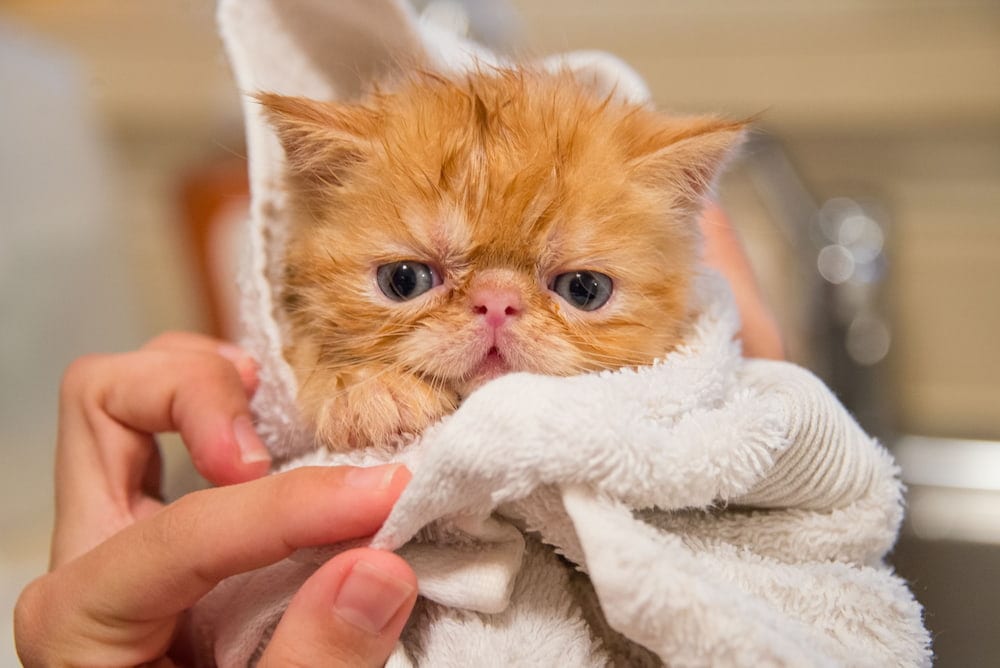
2. Warm Ear Solution
You never want to place a cold solution in the ears, as it can be unpleasant for your kitty. Always make sure to warm up the solution just a tiny bit before applying, just by holding the bottle in your hand.
3. Apply Solution
There are two ways to go about it. The first is to apply a small amount of the ear cleaner on cotton wool and then use that to clean the external ear canal. The second option is applying a very small amount of solution into your cat’s ears. It doesn’t take much, so you won’t want to be generous here. The entire goal is to loosen any dirt or debris. If you use too much solution, it might cause discomfort to your cat and vigorous head shaking.
4. Massage
Once you apply the solution, gently take the outer ear and massage the solution into the ears. This will work to loosen any gunk buildup. Only do this if your cat tolerates it.
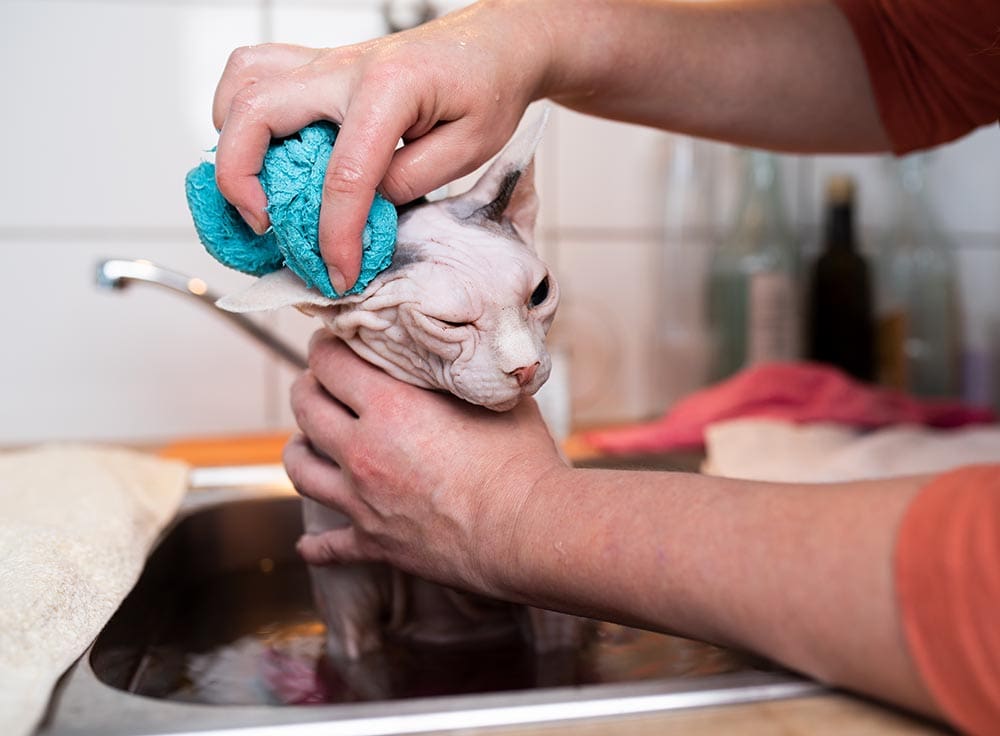
5. Use Cotton to Rid Debris
Use cotton balls to gently remove the excess solution and remove any dirt or debris from the ear canals. Be careful and gentle and never use Q-tips, as they can get stuck inside the ear canal or break off, damaging the eardrum.
- Gentle Care For All Pets - Infused with moisturizing hypoallergenic ingredients & enriched with...
- Deep Cleans From Head to Tail - Tackle the toughest dirt & messes with our extra strong pet wipes...
- Freshness On The Go - Each dog grooming wipes pack contains 30 counts of premium dog wipes that...
Whether your pet needs a quick refresh or cleanup of a sensitive area, pet-safe wet wipes are a convenient option. We recommend Hepper's Wash Wipes because they're effective on dirt and odors but also gentle on the skin. These USA-made premium wipes are safe for cats and dogs of any age and contain hypoallergenic, moisturizing ingredients.
At PangoVet, we've admired Hepper for many years, and decided to take a controlling ownership interest so that we could benefit from the outstanding designs of this cool cat company!
6. Repeat on the Other Side
Once you’re finished with that side, you’ll just repeat the same steps for the other side, and have a kitty with squeaky clean ears.
Possible Situations When Cat Ear Cleaning Is Important
You should always make sure to follow your vet’s recommendations and instructions when it comes to the reasons for cleaning the cat’s ears. This will be an important part of the ear treatment for your cat. On top of that, ear cleaning allows you to inspect your cat’s ears, monitor their progress and be able to quickly pick up on any issues.
There are a few instances when your vet may recommend ear cleaning, so let’s talk about a few of those in more detail.
1. Preventing and Treating Ear Mites
Mites can be a little hard to detect, but they can cause great issues for your kitty friends. Mites are tiny white parasites that feed on the oils and ear wax in your cat’s ear canals.
Mites are incredibly contagious, so if you have multiple cats, they can transfer from one to the other very quickly.
- Head shaking
- Excessive itching
- Ear inflammation and redness
- Bad smell
- Blackish discharge
Your veterinarian will be able to determine for sure if your cat has ear mites. If they see that this is an issue, they can prescribe treatments or eardrops to clear up the situation.
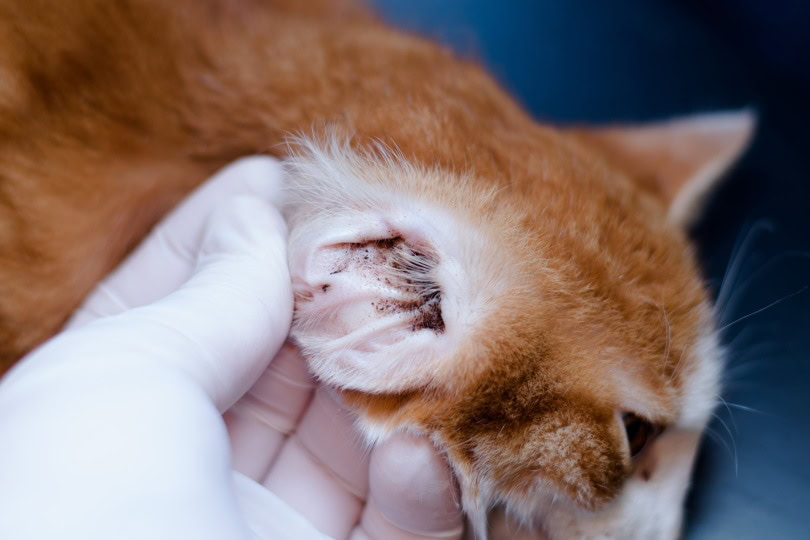
2. Wax Buildup
Most cats will have no issue with excessive buildup, but some might have an overproduction. Your vet may recommend more regular ear cleaning in this case to prevent wax build-up.
3. Ear Infection
Moisture and heat inside the ear canals are a perfect breeding ground for bacteria. This bacteria can overgrow, causing ear infections, which can be very painful and irritating to your feline. All ear infections do require veterinary treatment.
- Ear discharge and redness
- Excessive scratching
- Crying when scratching
- Head shaking
- Bad odor from the ear
If you suspect your cat has an ear infection, it’s time to make an appointment with your vet. They will be able to prescribe an antibiotic to take care of the infection if it is warranted. Recurring bacterial or fungal infections in the ears might also be a sign of food allergies, ear mites, or an underlying immune system disorder.
How Often Should You Clean Your Cat’s Ears?
While some cats will never need a single ear cleaning, others may require it on a more regular basis. For the exact frequency and duration of the cleaning, consult with your veterinarian, as it will depend on the underlying cause that requires the ear cleaning. If you clean your cat’s ears too frequently, it can cause irritation or damage to the inside of the ear.

Final Thoughts
So, now you know that cleaning your cat’s ears doesn’t have to be a time-consuming task, nor does it have to be too difficult, if this is something your vet has recommended that you do. As long as you are cautious about how much solution you put in their ears, and you follow your vet’s instructions, your cat will be free of ear problems in no time.
Also see:
Featured Image Credit: TRAPHITHO, Pixabay
